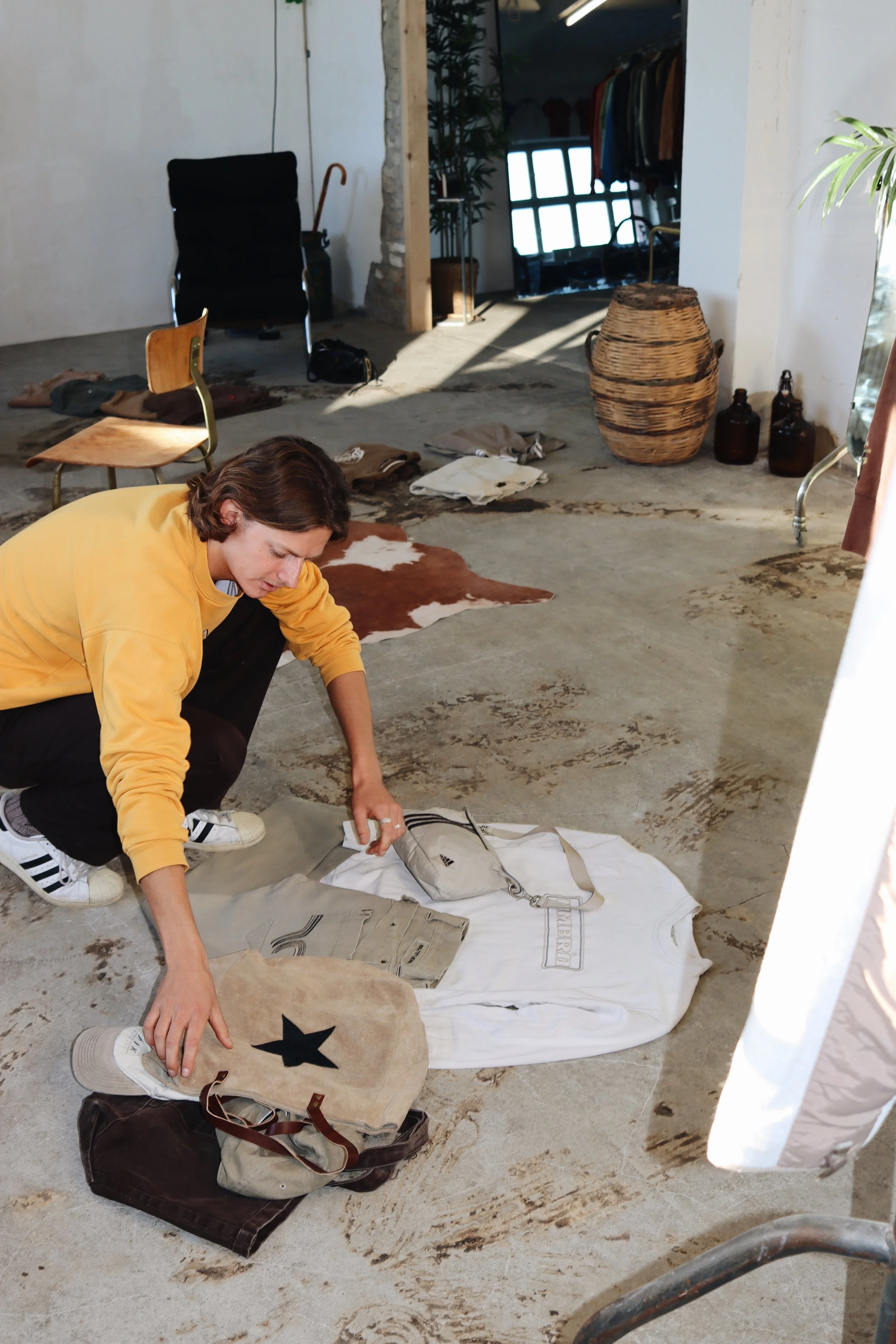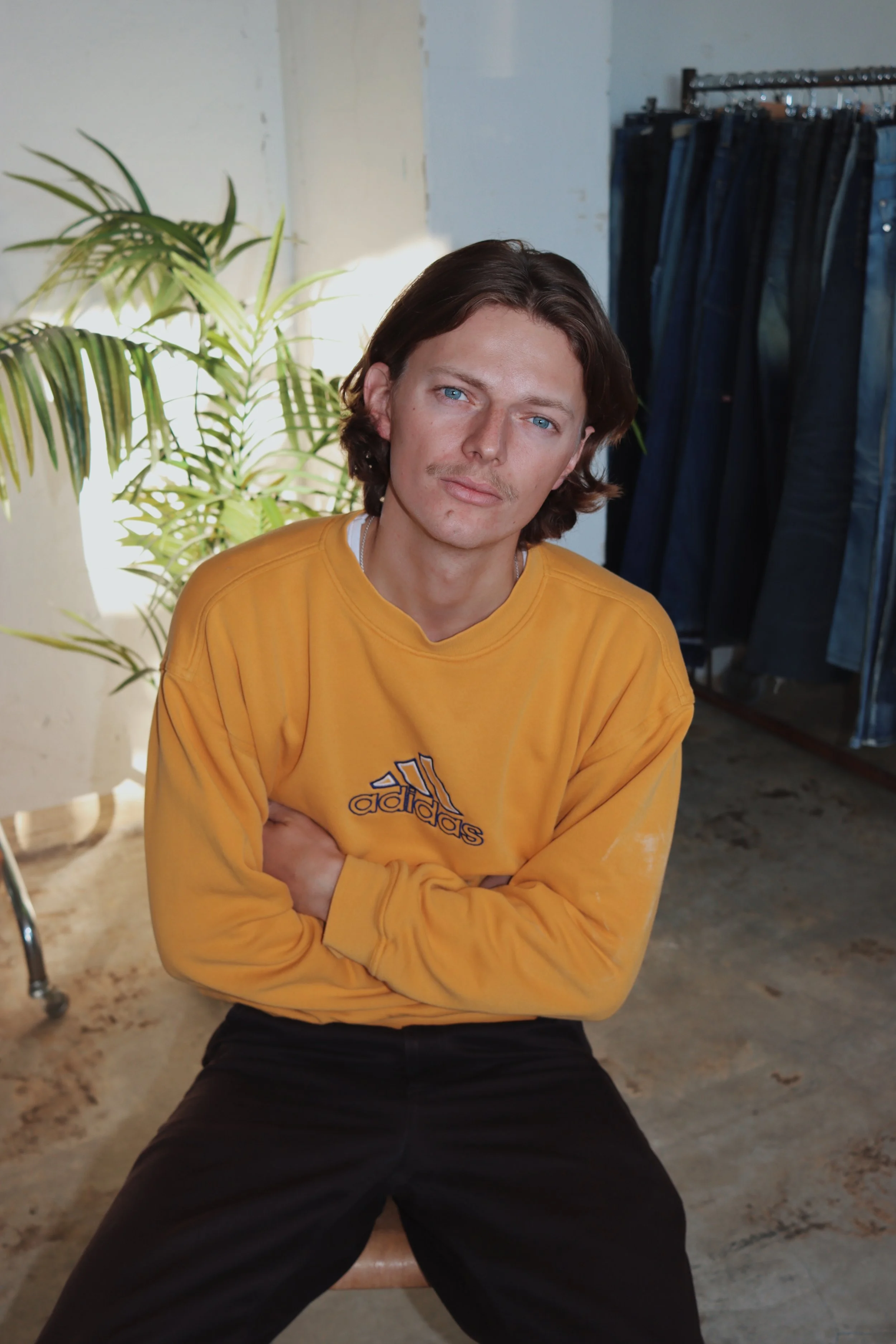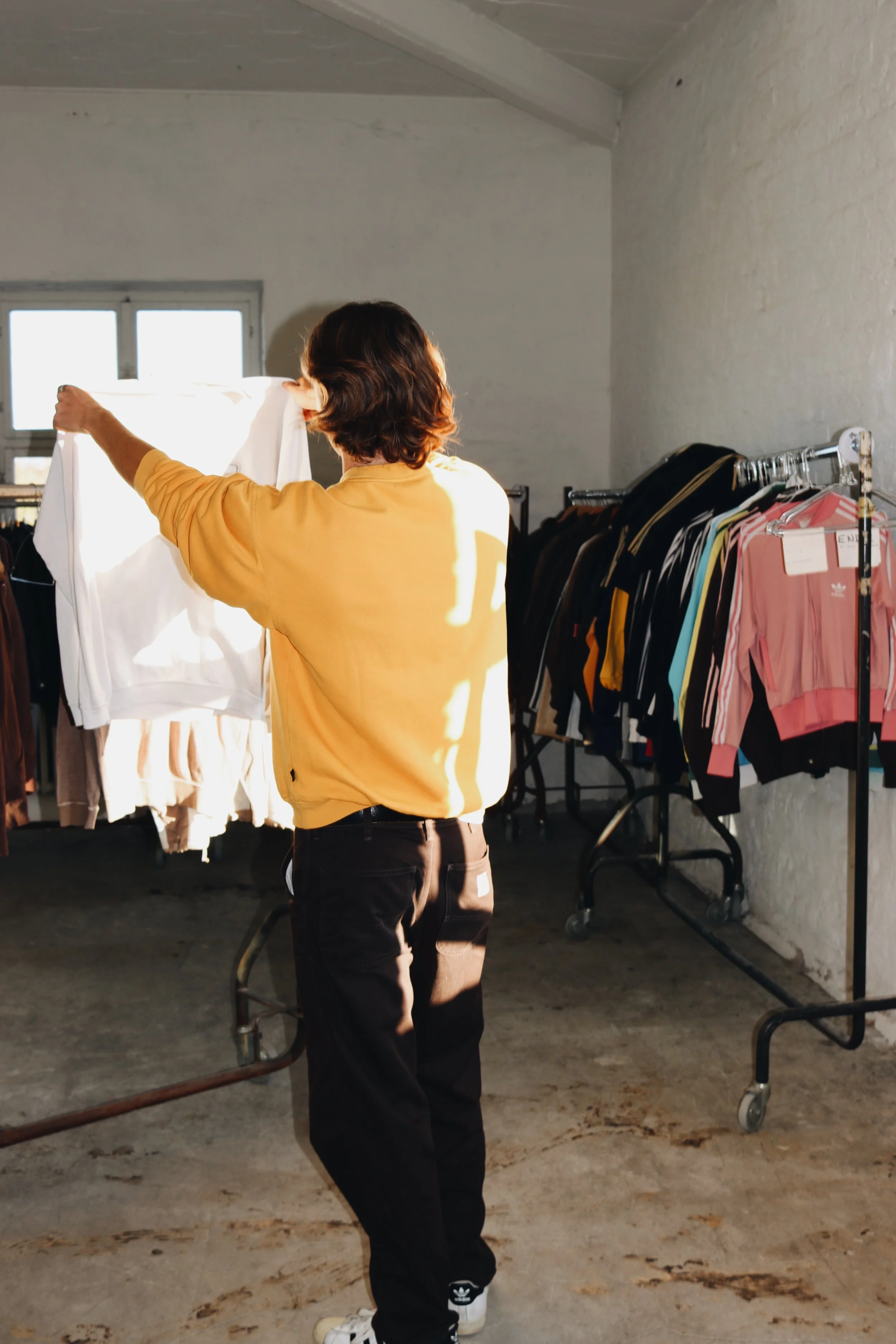Vintage Reinvented: The Story of last decades
AFFECT STUDIO VISIT
AFFECT visited the Vintage Studio last decades and caught up with its founder Carlo Wengler, a 24-year-old creative from Berlin. At just 19, Carlo turned his passion for secondhand fashion into a business, founding last decades in 2020. What started as a way to flexibly earn some money has since grown into a carefully curated online vintage store, specializing in streetwear and unique secondhand pieces.
AFFECT: Please introduce yourself. Who are you and where are we today?
CARLO WENGLER: I’m Carlo, the founder of Last Decades, and I’m from Kreuzberg, Berlin. Right now, we’re in Schöneberg, in my showroom and studio. Last Decades is a vintage online store specializing in streetwear and carefully curated secondhand pieces.
A: When was Last Decades founded?
C: I started the company in 2020, when I was 19, just after a gap year following high school. During the Corona period, I had some free time and began experimenting. Over the last five years, Last Decades has grown from a small personal project into a fully established brand.
A: Was it always your childhood dream to start a business?
C: Not really. I never aimed to build a large brand or start a business. I’ve always loved secondhand fashion, spent a lot of time at flea markets, and wanted a flexible way to earn some money during my studies so I wouldn’t have to work shifts. Over time, I realized I genuinely enjoyed it. Initially, I started by selling my own wardrobe, then launched a website, and step by step the project grew. Today, we have a showroom, a large warehouse, and a really cool space that reflects the brand’s style.
A: Is there a piece in your showroom that you feel particularly represents Last Decades?
C: I would say a quintessential Last Decades piece is something from Adidas. We have a wide selection of Adidas jackets. Personally, I’m especially interested in items connected to the Olympics or other sports events. For the brand, a classic Adidas jacket from the ’90s or early 2000s would be a perfect representation.
A: How do you select the clothing for your shop?
C: Everything we sell is handpicked. I don’t just buy large quantities of clothing randomly; I focus on quality and style. In the beginning, I started with pieces I would wear myself. Anything I bought at flea markets that no longer fit became stock for Last Decades. Over time, I also paid attention to what friends and other people in Berlin were wearing and expanded the selection accordingly. I often go by instinct, just by feeling or looking at a piece, I can tell if it works. Some items I source from flea markets, others from special suppliers, and sometimes I even travel abroad to carefully select pieces. My goal is to bring clothing back into circulation that might otherwise remain unsold.
A: Are there particular decades that inspire you?
C: I’m most drawn to the late ’90s and early 2000s. I don’t have much connection to the ’70s or ’80s. Adidas-wise, the ’80s and early ’90s were bold and colorful, with those classic satin track suits, but that’s not the main thing that excites me about vintage. I prefer classic sweatshirts from the late ’90s and early 2000s, sometimes with a touch of Y2K style. While I appreciate the historical value of older pieces, I primarily see clothing as a way to dress stylishly rather than just as collectibles.
A: How has vintage fashion changed in recent years?
C: Vintage is no longer just a trend—it’s become firmly established. In Berlin, for example, it’s common for young people to visit flea markets, buy secondhand, or seek out vintage items. Vintage can be hard to define clearly. Some say a piece must be at least 20 years old, others say even older. I don’t need to elaborate on fast fashion—most people are aware of its impacts on both people and the environment. What’s important is that a lot of people are now embracing vintage, each with their own definition. In recent years, the movement has evolved into a genuine counterbalance to mainstream fashion.
A: Does sustainability play a role at Last Decades?
C: Absolutely, even though we don’t heavily promote it. Secondhand clothing is inherently sustainable. Additionally, we focus on eco-friendly processes in our studio and warehouse: we use reusable boxes, minimal plastic, and furnished the studio with secondhand furniture. Clothing that is slightly damaged or dirty is repaired and cleaned before being sold. This reduces the need for new purchases and creates real added value.
A: How would you describe Last Decades in three words?
C: Sustainable, authentic, sporty.
A: Is there a piece in the collection with a special story?
C: Yes, many items tell a personal story. Some come from significant sporting events, like world championships, or have collector’s value. It’s especially interesting when we discover old tickets for a ’90s movie, Deutsche Mark coins, or dollar bills in pockets. You uncover a little piece of someone else’s history. A personal highlight for me is my Olympic sweater from St. Moritz, a special Adidas collection that I keep—it’s almost like a work of art for me.
A: Do you have any insider tips for finding special flea market pieces?
C: Go early, even abroad, dig through bins, or ask the sellers directly. I know people who source almost everything from flea markets. They often search with a flashlight in the dark. Those are usually the moments when you find truly unique pieces—and usually at a great price.
A: What’s next for Last Decades?
C: I have so many ideas and exciting projects I want to realize. I studied abroad and am now back in Berlin permanently, working in the studio and developing creative projects. I want to pursue collaborations, organize events, and work with photographers, stylists, and artists on creative projects.
A: What advice would you give your 16-year-old self?
C: Do what truly inspires you. To my 16-year-old self or even earlierI’d say: do what feels right, follow what excites you, and don’t let others influence you too much. What’s important is to start something, experiment, and stick with it.
Interview by Noémi Zak

